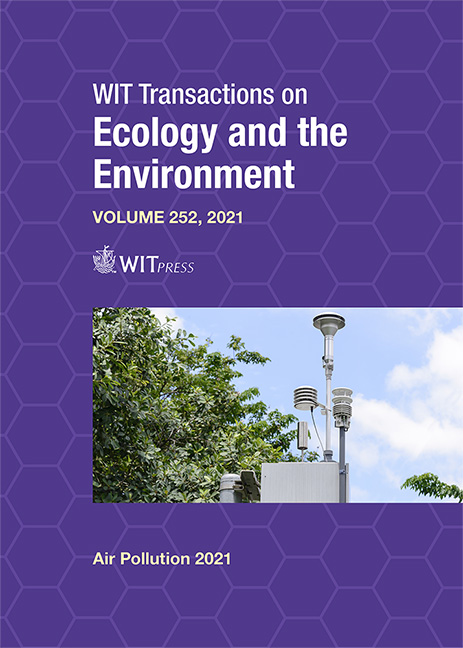IMPACT OF COVID-19 PANDEMIC ON N AND S ATMOSPHERIC DEPOSITION FLUXES IN A MEGACITY IN THE NORTH EAST OF MEXICO
Price
Free (open access)
Transaction
Volume
252
Pages
11
Page Range
187 - 197
Published
2021
Paper DOI
10.2495/AIR210171
Copyright
Author(s)
JOSÉ A. SOLÍS CANUL, ROSA M. CERÓN BRETÓN, JULIA G. CERÓN BRETÓN, SIMÓN CARRANCO LOZADA, EVANGELINA RAMÍREZ LARA, MARIA DE LA LUZ ESPINOSA FUENTES, ROCÍO GARCÍA MARTÍNEZ, JAIR R. CARRILLO AVILA, ARMANDINA VALDEZ CAVAZOS, REYNA DEL CARMEN LARA SEVERINO, MA
Abstract
During 2020–2021, the COVID-19 pandemic resulted in a lockdown in many countries around the world. This work assessed the impact of the restrictions to economical and industrial activities, and population mobility on N and S atmospheric deposition fluxes in the Metropolitan Zone of Monterrey (MZM). Trends of atmospheric deposition fluxes were analyzed and compared during two periods. The first period before pandemic from 27 February 2017 to 15 October 2018; the second one, from 20 October 2020 to 5 May 2021. Both periods including two climatic seasons (dry and rainy) and considering the same sampling points along MZM. Passive collectors of throughfall deposition (hydrologic flux of ions to floor contained within a solution) were used to estimate concentrations for SO42– and NO3–. From a meteorological analysis, by using back-air masses trajectories and wind roses, the influence on transport and deposition of pollutants was assessed. The results showed that the change rates of N and S before and during the lockdown ranged from 63%–67% and 90% for N and S, respectively. The response of S was more sensitive to the lockdown than N. Since, during pandemic, industrial and vehicular emissions, and forest fires were reduced; it had a positive impact on atmospheric deposition. However, besides the lockdown due to COVID-19, the observed changes in spatial and temporal deposition patterns also could be attributed to meteorological conditions associated to the sampling season, particularly to precipitation patterns. Mean atmospheric deposition fluxes for N and S for the two studied periods were compared with critical load values established for sensitive ecosystems in Europe. Exceedances to critical load values before pandemic were significant higher than those found for the period during pandemic, suggesting that the lockdown improved the air quality in MZM.
Keywords
COVID-19, nitrogen, sulphur, atmospheric deposition, Monterrey





